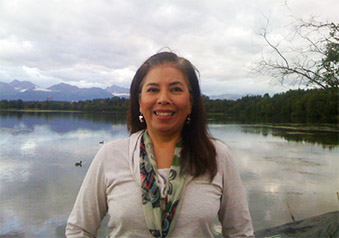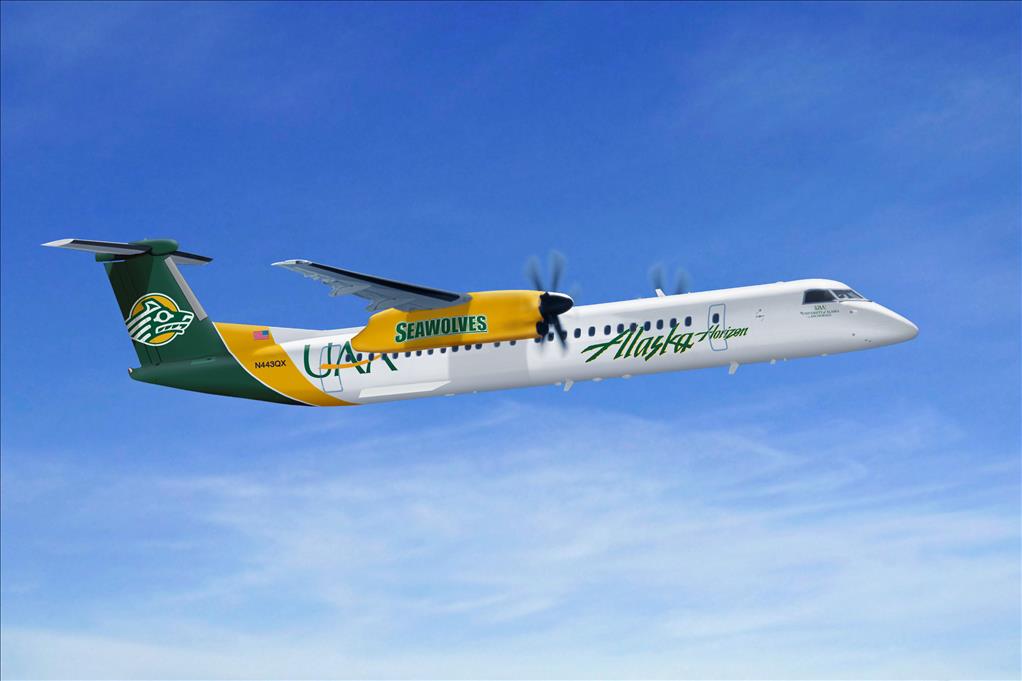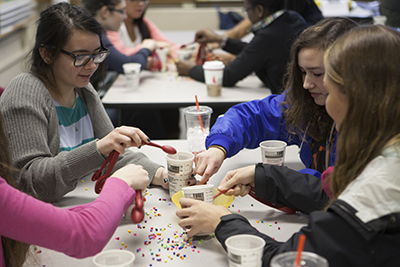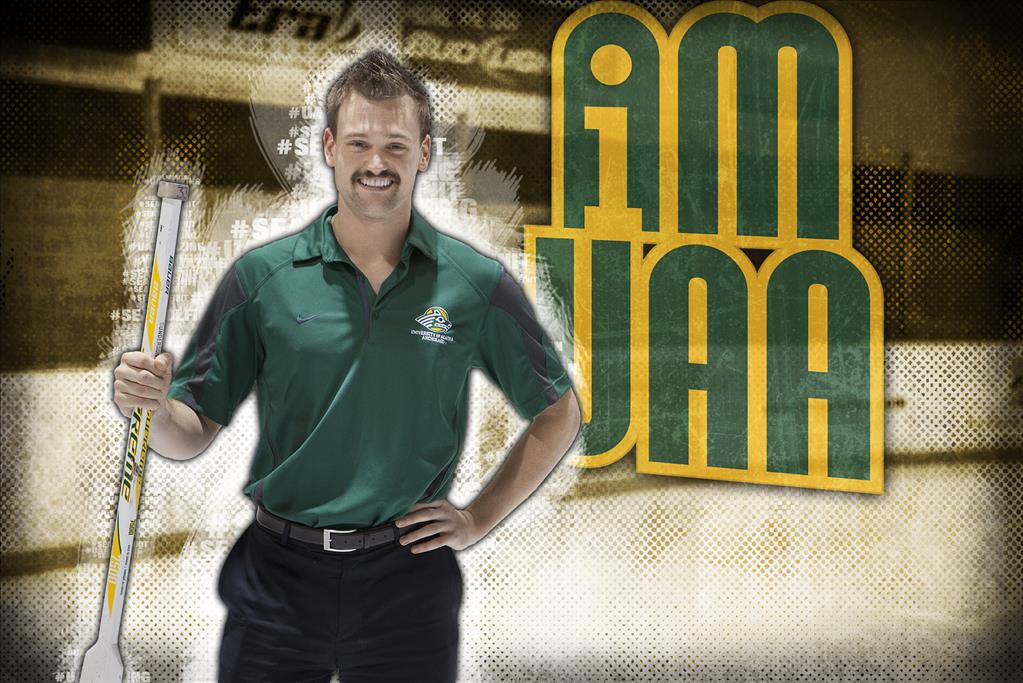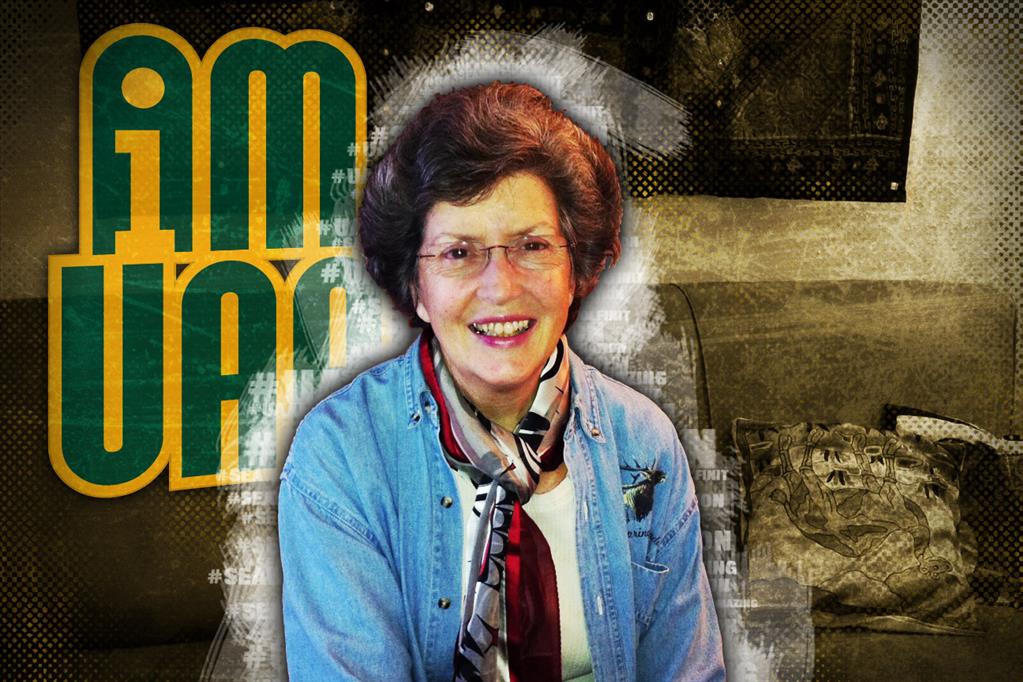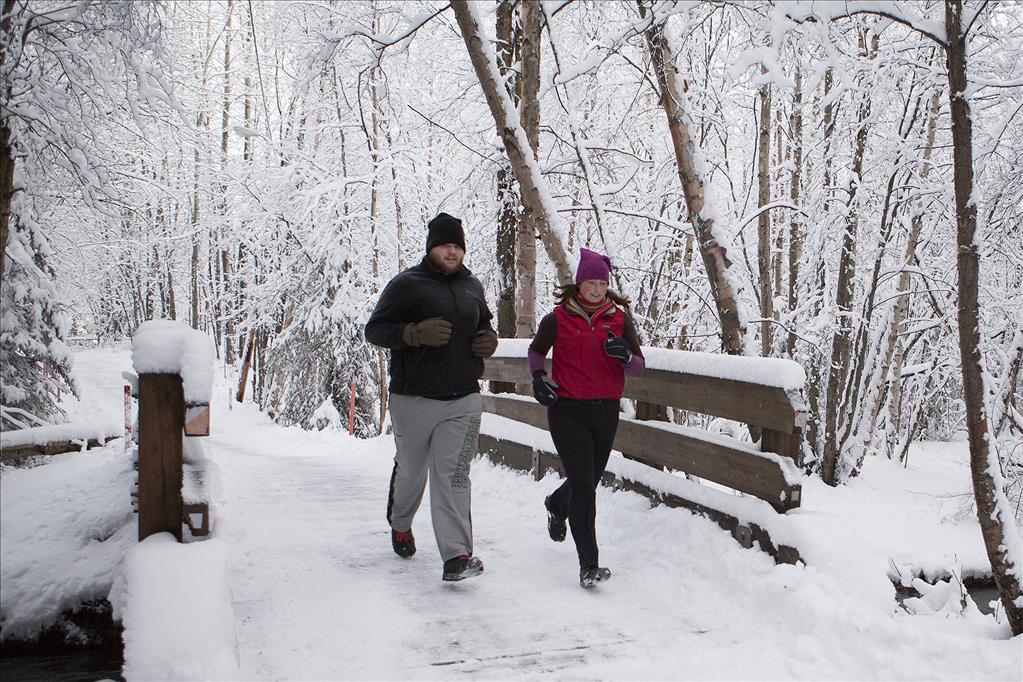Alaska Natives in “the academy” – Where are they?
by Ted Kincaid |
Late Friday afternoon I found Maria Williams, UAA's director of Alaska Native Studies, hunched over a hot computer, every surface in her office layered with stacks of paper. This is what two weeks out from a major academic conference looks like, when you are the host.
"This place is impossible," she said, abandoning her office, "let's use the conference room." She sank into a chair, only to leap to her feet again to grab a fat, 25-page conference agenda.
The big event, April 5-6 at UAA, is the first University of Alaska system-wide look at Alaska Natives in the Western-conceived and -created intellectual hierarchy known as "the academy."
The truth is they can be hard to find.
Williams offers me a one-page spreadsheet with about 50 names on it. "That's how many Alaska Natives-in the whole country-have earned their Ph.D.'s," she said. Degree institutions range from UAF to Harvard, Brown, Stanford, USC, Berkeley, UCLA and UC Santa Barbara, among others.
Of all the names on that sheet, though, fewer than 20 had ever worked anywhere at the University of Alaska.
A shared story
"Many are like me," Williams said, a Tlingit who grew up in Anchorage, studied classical music in California and eventually earned a doctorate in ethnomusicology from UCLA in 1996.
When it came time for a job, Alaska was her first choice. Despite efforts to work at the state's university, she ended up teaching Native Studies and music in New Mexico for 13 years. Just two years ago, she finally secured a spot at UAA and managed to come home.
Once here, she began trying to breathe new life in to UAA's tiny Alaska Native Studies minor. First she sought counsel with about 10 other Alaska Native academics across UAA's campus. That group decided to join forces with colleagues at UAS and UAF under the umbrella of a new Alaska Native Studies Council, a group of about 25.
That was about a year ago, and by last June, they'd secured enough funding to host this conference and launch a new research journal. An event this big takes a team, and Williams especially thanked her UAA colleagues Jeane Breinig, Sharon Lind and Lance Twitchell of UAS, and countless others who helped with the legwork of hosting.
The conference title hints at their ambitions: "Transforming the University: Alaska Native Studies in the 21st Century." A second hint comes in the choice of keynote speaker.
He is a Maori academic named Graham Hingangaroa Smith, a distinguished professor of education from the University of New Zealand. He and his wife, Linda Smith, author of "Decolonizing Methodologies," have basically cracked open higher education for their country's indigenous thinkers.
Their success has been nothing short of revolutionary, Williams said, leading to new research and validating non-Western "ways of knowing." Ripples in higher education have been felt in Hawaii, the First Nations of Canada and across the Lower 48 states.
Strong campus support
Williams was surprised and pleased at the financial support-almost $30,000-that came from UAA's provost, Bear Baker. That, and smaller contributions from around campus and Alaska, made the conference possible.
When I asked Baker why he'd stepped up so readily with institutional support, he pointed to the high dropout rate and shaky retention of Alaska Natives in higher education.
"We hope all of that will improve when we have Alaska Native professors influencing curriculum. We don't just need them at the table," he said, "we need them in charge."
While the conference's title mentions Alaska Native Studies, experts in indigenous higher education are coming from around the country and the world to present nearly 75 academic papers and lead 40 panels and workshops.
One panel is titled "Speaking Truth to Each Other: Making Higher Education Accountable to Indigenous Communities." Another is "Decolonization: Global Models."
Alaska's Native Studies is just one piece of the worldwide indigenous education movement. "We're taking our place globally," Williams said, "and we all have the same education issues."
Looking up
When I asked Williams what about this conference she found most exciting, she said it was the young up-and-coming academics. She pointed back to that list of 50 Alaska Natives with Ph.D.s. The first was awarded in 1970; about 20 were awarded in the '90s, but the numbers slow after that, to one or two a year, sometimes none.
"Until you hit 2010," she says with a smile, "and the numbers pick up again." And unlike her own story, she knows of two freshly minted Ph.D.s who walked right into jobs where they wanted them, at Kodiak College in Alaska.
IF YOU GO: "Transforming the University: Alaska Native Studies in the 21st Century" April 5-6, 8 a.m.-6 p.m. Registration is $85 for the public, $20 for students and free for elders. Campus parking is always free on Fridays and weekends.
FREE FRIDAY EVENTS: The keynote address by Graham Hingangaroa Smith (9 a.m., Wendy Williamson Auditorium) and a staged reading of Ishmael Hope's new work for Perseverance Theatre, "The Defenders of Alaska Native Country" (7-8:15 p.m., Rasmuson Hall, Room 101).Download a PDF of the conference schedule here.
"The Tools We Make," a pre-conference focused on the state of traditional and contemporary Alaska Native arts is April 4 9:30 a.m.-7:30 p.m. at the Anchorage Museum, 121 W. 7th Ave. Registration $15. Roundtables and panels feature about 25 of Alaska's most well known traditional and contemporary Native artists, from Alvin Amason to Allison Warden, from mask-making to video-making. Download a PDF of the pre-conference schedule here.
 "Alaska Natives in “the academy” – Where are they?" is licensed under a Creative Commons Attribution-NonCommercial 4.0 International License.
"Alaska Natives in “the academy” – Where are they?" is licensed under a Creative Commons Attribution-NonCommercial 4.0 International License.










